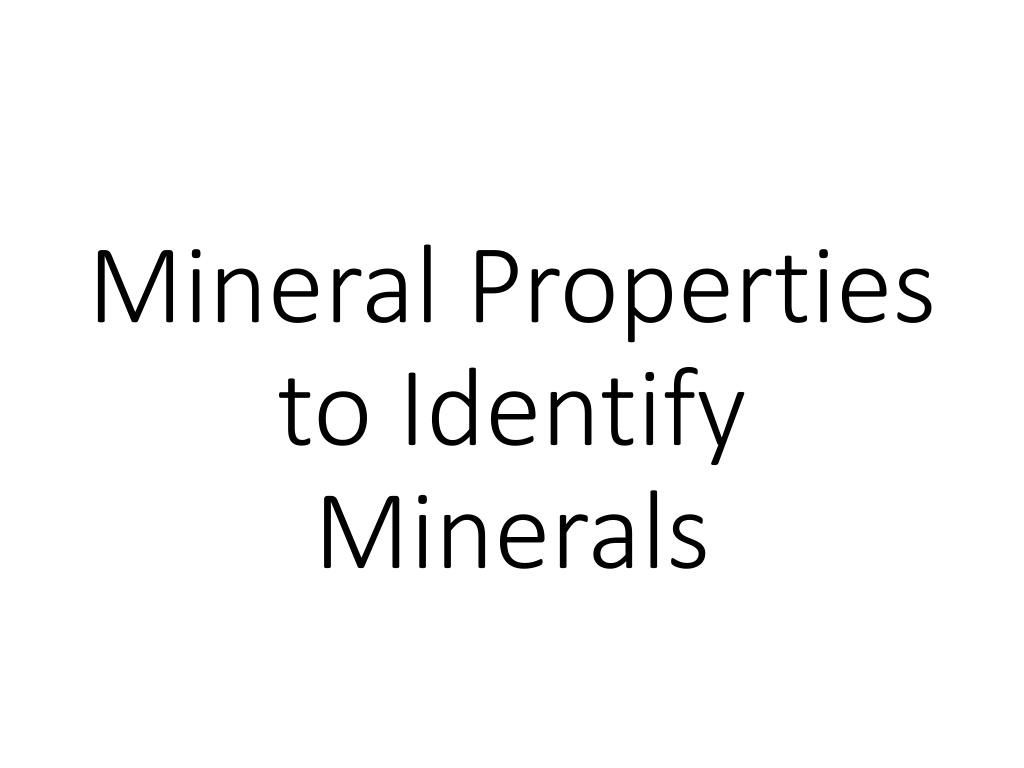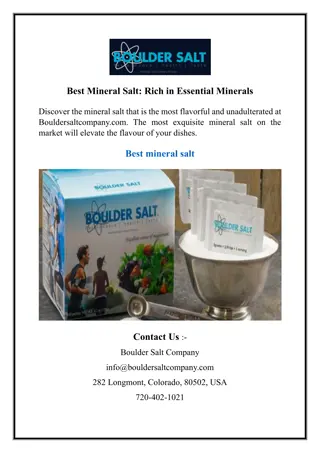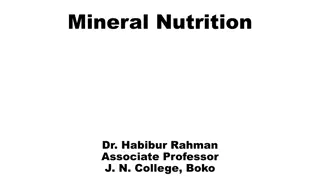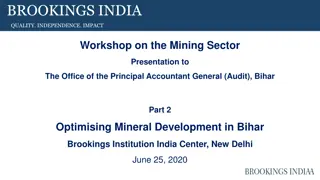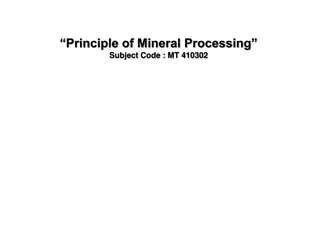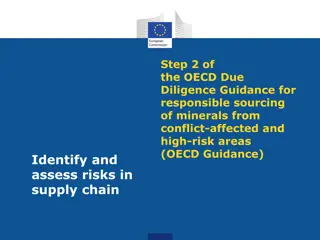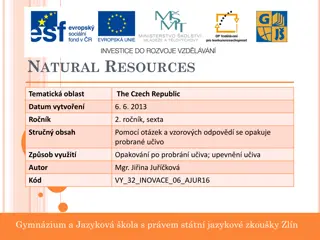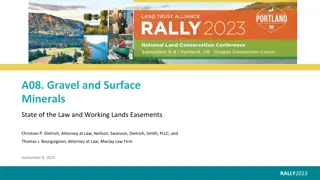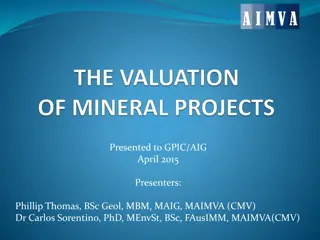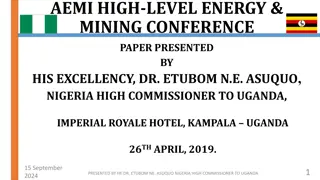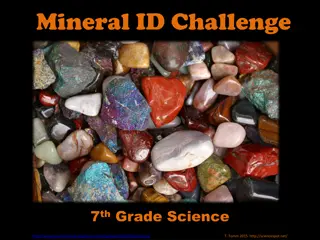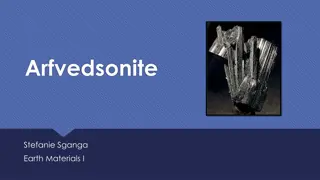Understanding Physical Properties for Mineral Identification
Explore the key physical properties used to identify minerals, including color, streak, hardness, cleavage, fracture, luster, and density. Learn how these properties play a crucial role in mineral identification and how to apply them effectively.
Download Presentation

Please find below an Image/Link to download the presentation.
The content on the website is provided AS IS for your information and personal use only. It may not be sold, licensed, or shared on other websites without obtaining consent from the author. Download presentation by click this link. If you encounter any issues during the download, it is possible that the publisher has removed the file from their server.
E N D
Presentation Transcript
Mineral Properties to Identify Minerals
Learning Objectives I can describe physical properties used to identify minerals. I can use physical properties to identify minerals.
Physical Properties of Minerals: Physical Properties of Minerals: Used for Identification (I.D.) Used for Identification (I.D.) Color Streak Hardness Cleavage Fracture Luster Density
Color Color First impression Not very reliable because lots of minerals can occur in many different colors
Quartz Purple Amethyst
Clear Blue Green Purple Fluorite
Streak Streak The TRUE color of a mineral Color of a mineral s powder Minerals with a hardness greater than 7 usually don t create a streak on the streak plate because they are harder than the Porcelain tile (unless the streak plate is specially made).
Hardness Hardness A mineral s resistance to being scratched Mohs Hardness Scale from 1-10 Hardness depends on how tightly packed the atoms are
Mohs Hardness Scale Mohs Hardness Scale Softest 1 2 3 4 5 6 7 8 9 10 Diamond Talc Gypsum Calcite Fluorite Apatite Potassium feldspar Quartz Topaz Corundum Hardest
Cleavage Cleavage Splits along definite planes
Cleavage Cleavage Cleav = to split split Cleaver
Fracture Fracture Breaks irregularly, jagged edges
Fracture Examples Fracture Examples
Luster Luster How light shines off a mineral Metallic or Nonmetallic
Luster Examples Luster Examples Nonmetallic Metallic
Density Density The ratio of an objects mass to its volume Good to use to identify as most minerals do not have the same density
Special Properties Special Properties 1. Magnetism 2. Double Refraction 3. Fluorescence 4. Phosphorescence 5. Piezoelectric 6. Acid Test
Magnetism Magnetism Attracted to a magnet Contains IRON, cobalt, or nickel
Double Refraction Double Refraction Looking through it, you see double Ex. Calcite
Fluorescence Fluorescence Glows under ultraviolet (UV) light
Fluorescence under ultraviolet, UV light
Phosphorescence Phosphorescence Continues to glow even after the UV light has been removed
Piezoelectric (Pressure=Electricity) Piezoelectric (Pressure=Electricity) Electricity is generated from Pressure Example: Quartz
Acid Test Acid Test Use hydrochloric acid Tests for carbonate (calcite)
